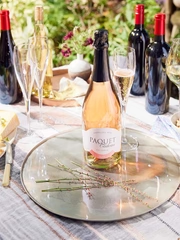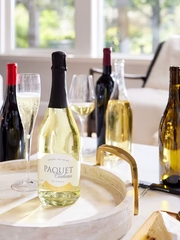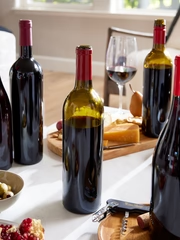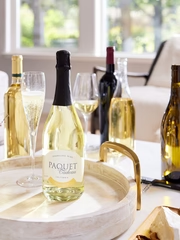 I am often asked how many points our wines received. Well, I can say that our 2016 Artisan 5 Cabernet Sauvignon from Napa Valley is a Platinum, Best in Class, 97-point winner. Our Adorn started to peak in its development and just received a 91-point Gold Medal. The best part of these results is that we are getting them from multiple sources of diverse people, publications and competitions. Different types of professionals – such as journalists, sommeliers, bloggers, winemakers and chefs – are awarding our efforts.
A high score, however, doesn’t always mean that a wine is excellent. In many regions, a high score may reflect only the preference of one critic. Over the last few decades, especially in California, that translates into very ripe, concentrated, full-bodied wines burgeoning with new oak. But we know that in our model for in-home Tastings, the market is so much broader. We need variety and in numerous styles. One size does not fit all!
Points can help the average consumer in stores or restaurants. The world of wine is vast and complex, with hundreds of varieties and regions. This point system provides a gauge so people can purchase wine confidently and independently.
I do share the ideas of many of my fellow winemakers in trying not pay attention to scores. They simply make wine the way they want, leaning toward the balance of their terroir and fruit typically found in Old World wines. For these judges, on that day, (below) this 2016 Cabernet was a near-perfect expression of classically proportioned Cabernet. But this wine is not a big tannic bomb that is so easily found in our valley nowadays.
I am often asked how many points our wines received. Well, I can say that our 2016 Artisan 5 Cabernet Sauvignon from Napa Valley is a Platinum, Best in Class, 97-point winner. Our Adorn started to peak in its development and just received a 91-point Gold Medal. The best part of these results is that we are getting them from multiple sources of diverse people, publications and competitions. Different types of professionals – such as journalists, sommeliers, bloggers, winemakers and chefs – are awarding our efforts.
A high score, however, doesn’t always mean that a wine is excellent. In many regions, a high score may reflect only the preference of one critic. Over the last few decades, especially in California, that translates into very ripe, concentrated, full-bodied wines burgeoning with new oak. But we know that in our model for in-home Tastings, the market is so much broader. We need variety and in numerous styles. One size does not fit all!
Points can help the average consumer in stores or restaurants. The world of wine is vast and complex, with hundreds of varieties and regions. This point system provides a gauge so people can purchase wine confidently and independently.
I do share the ideas of many of my fellow winemakers in trying not pay attention to scores. They simply make wine the way they want, leaning toward the balance of their terroir and fruit typically found in Old World wines. For these judges, on that day, (below) this 2016 Cabernet was a near-perfect expression of classically proportioned Cabernet. But this wine is not a big tannic bomb that is so easily found in our valley nowadays.
 I grew up with memories of Pauillac, Pomerol, Margaux and Saint-Émilion. Our difference of opinion wouldn’t be a big deal except that those single minded critics, who are demonstrating a preference for ripeness, extraction, and oak, have enough influence to affect the sales of any given winery. A poor score in the mid-80s and you will sit on one vintage for longer than usual, but a 95 translates to a quick sellout.
A large percentage of high-scoring wines also do not age well, because wines that are harvested later typically have lower acidity, and acidity is a major factor in longevity. Most of the high-scoring wines I’ve had are far beyond their prime at age 10, whereas the classically proportioned wines are still going strong 10, 20 or even 30 years later.
My point is that ratings may place the integrity of classically great wine at risk for those who enjoy it. Therefore, you should drink and acquire what you like. Above all, remember that wine is about the land, the people who make it and the friends with whom you enjoy it. A single score never defines the full story.
We have all different taste buds and should not be afraid to use them.
I grew up with memories of Pauillac, Pomerol, Margaux and Saint-Émilion. Our difference of opinion wouldn’t be a big deal except that those single minded critics, who are demonstrating a preference for ripeness, extraction, and oak, have enough influence to affect the sales of any given winery. A poor score in the mid-80s and you will sit on one vintage for longer than usual, but a 95 translates to a quick sellout.
A large percentage of high-scoring wines also do not age well, because wines that are harvested later typically have lower acidity, and acidity is a major factor in longevity. Most of the high-scoring wines I’ve had are far beyond their prime at age 10, whereas the classically proportioned wines are still going strong 10, 20 or even 30 years later.
My point is that ratings may place the integrity of classically great wine at risk for those who enjoy it. Therefore, you should drink and acquire what you like. Above all, remember that wine is about the land, the people who make it and the friends with whom you enjoy it. A single score never defines the full story.
We have all different taste buds and should not be afraid to use them.





